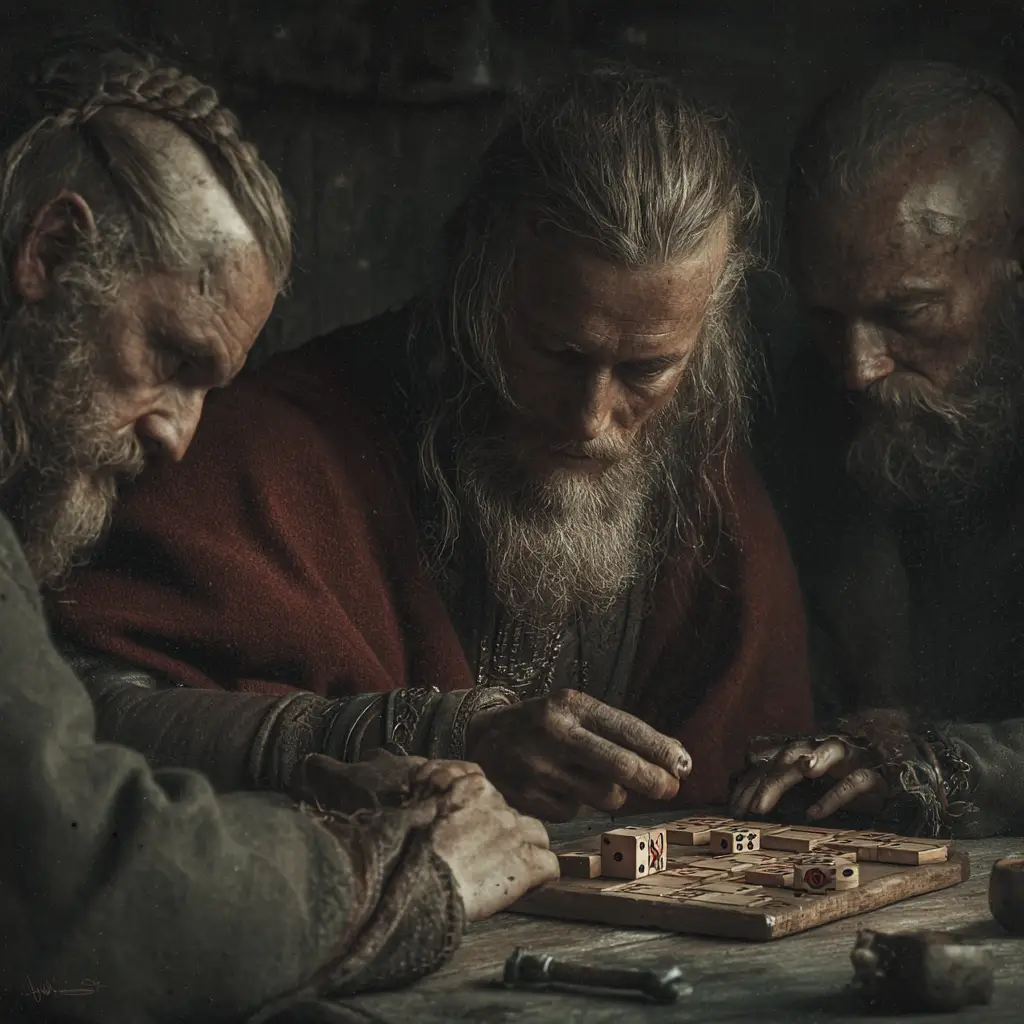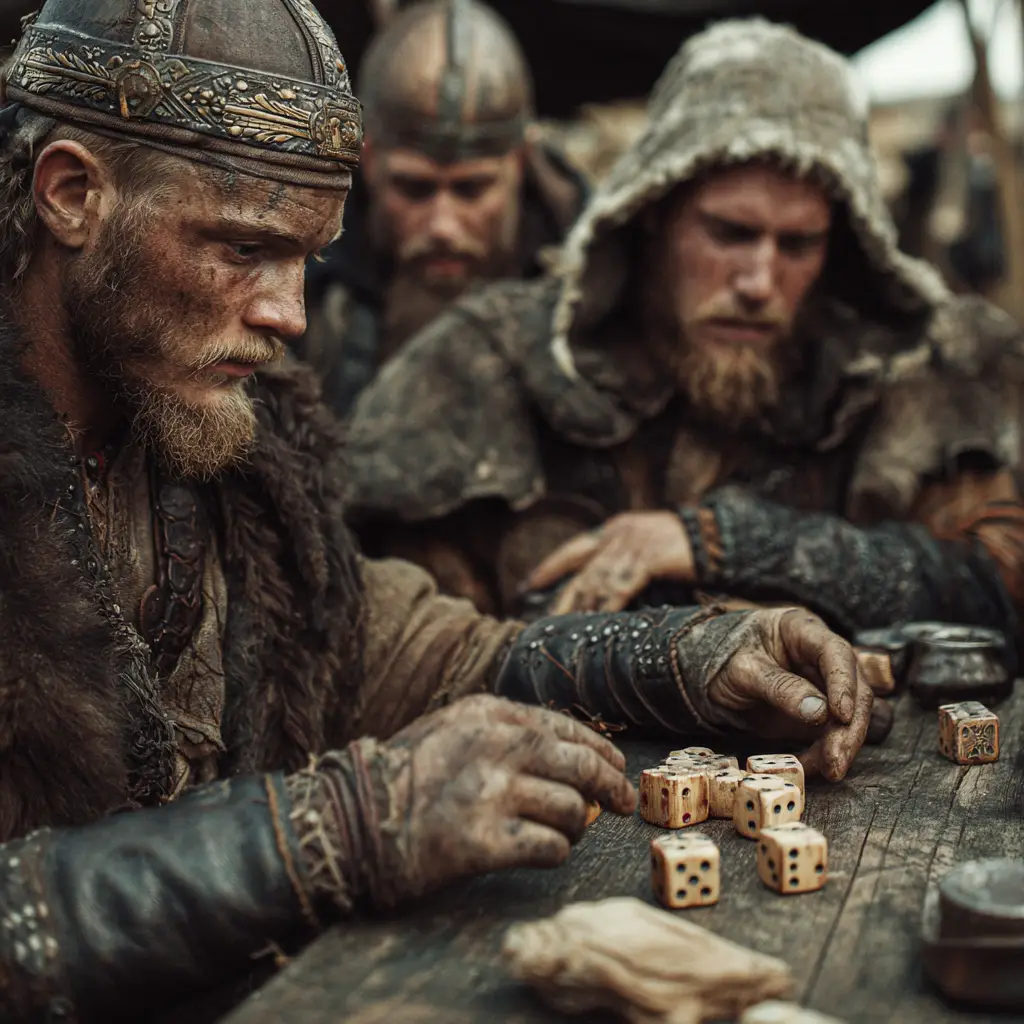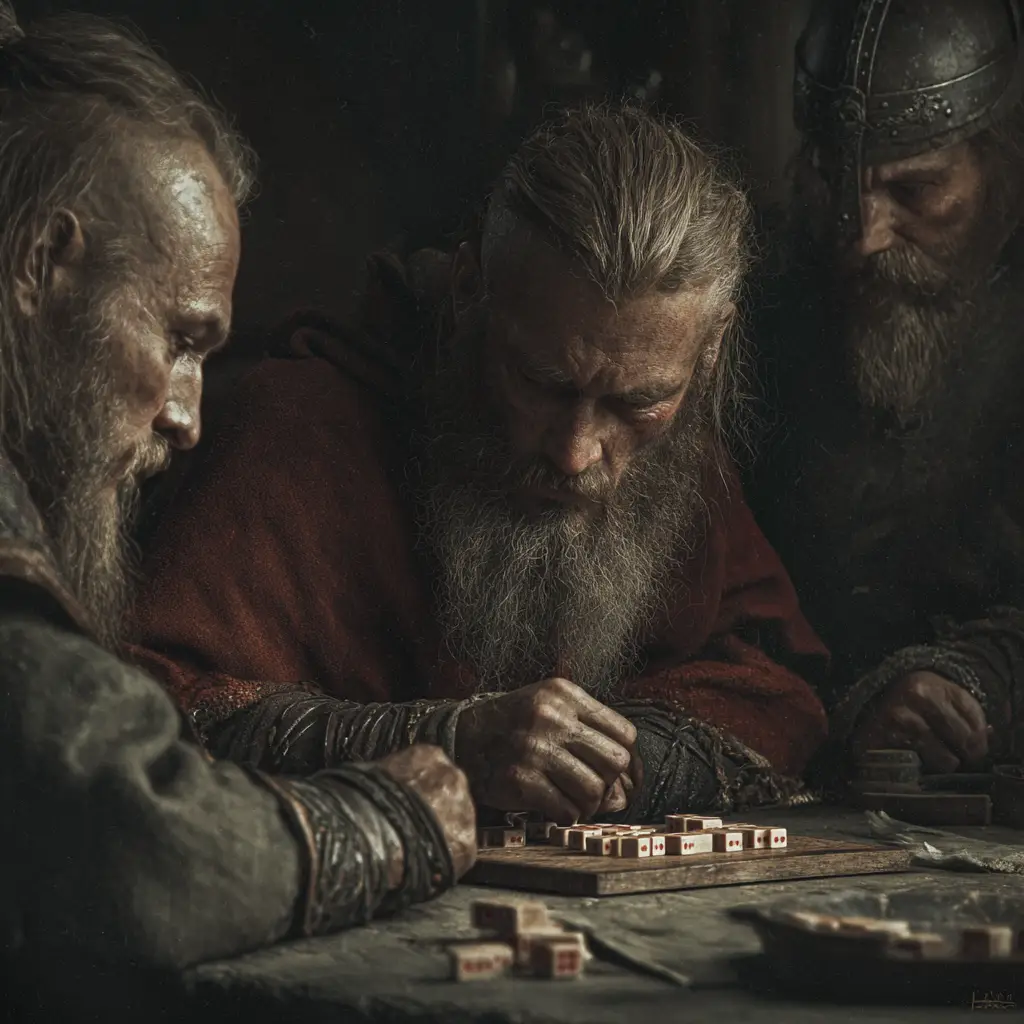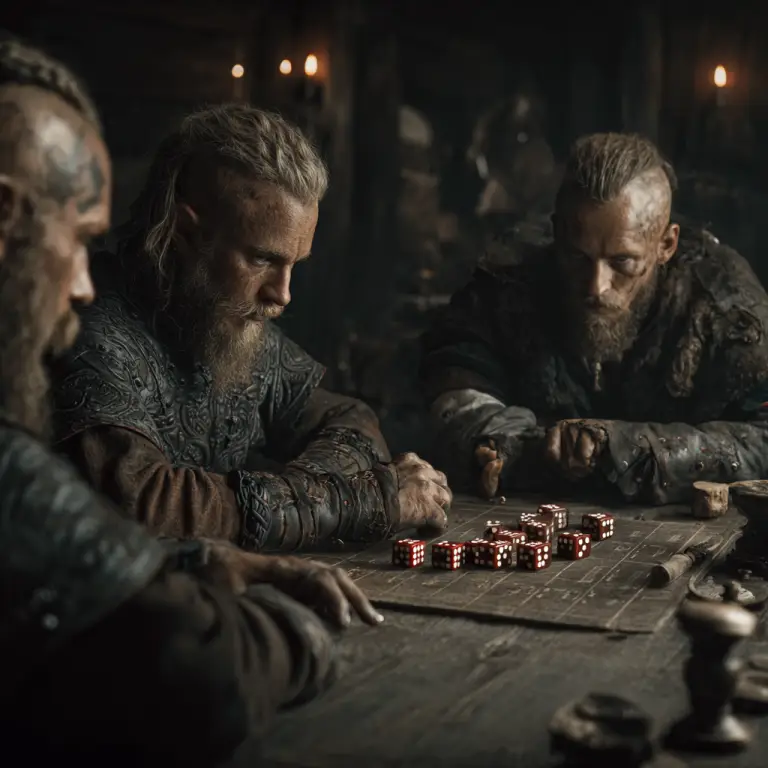The Vikings were not only warriors, traders, and explorers, but they also enjoyed games of chance and strategy during their leisure time. Evidence from archaeological finds, sagas, and historical accounts suggests that dice games and gambling held a significant place in their social lives.
Viking dice were commonly crafted from bone, antler, ivory, and occasionally wood. These materials were readily available and easy to shape, though some finely carved examples show the care and pride taken in their design. Most dice were six-sided and closely resemble the modern form, though some sets found in graves and settlements include unusual shapes that may have been used for specific games or rituals. The presence of dice in burial sites indicates that they were valued possessions and possibly linked with ideas of fate and destiny, concepts that were central to Norse belief.
Gambling appears to have been more than casual entertainment. It was a way to demonstrate bravery, confidence, and skill. Some sagas describe men wagering not only small items of personal value, such as jewellery or weapons, but also land and even their freedom. This reflects how seriously chance was regarded in Viking culture and how tightly it was woven into concepts of honour and reputation. Losing a game could be costly, while winning might bring not only wealth but also respect among peers.
Games of chance were often played in longhouses during feasts or in military camps as a way to pass the time. The atmosphere would have been lively, with men testing their luck, boasting of past victories, and perhaps appealing to the gods to favour their throws. In this sense, gambling also carried a ritual quality, aligning the uncertainty of dice with the unpredictability of life and battle.
The archaeological record shows a wide distribution of gaming pieces across Scandinavia and Viking settlements abroad. Dice, gaming boards, and counters have been uncovered in York, Dublin, and Hedeby, highlighting that these pastimes travelled with the Vikings wherever they went. Such finds reveal a culture that valued play as much as combat, and that used gambling not only for amusement but also as a reflection of deeper beliefs about fate and fortune.
Today, Viking dice and gaming artefacts are treasured in museums as glimpses into the everyday life of a society that balanced fierce raids and trade with moments of chance, laughter, and risk. They remind us that the Vikings, for all their reputation as warriors, were also people who sought enjoyment, tested their courage, and embraced the uncertain roll of the dice.



